optimum reuse
Reusing structural elements entails reversing the conventional structural design process. The mechanical and geometric properties of available elements predetermine the layout of a structure, in other words: form follows availability. The operation is one that can be optimized computationally. What is the best way to assign reclaimed members into a structural system? What is the best topology and geometry of a system in order to best reuse a given stock of elements? How much savings can be achieved in terms of environmental damage?
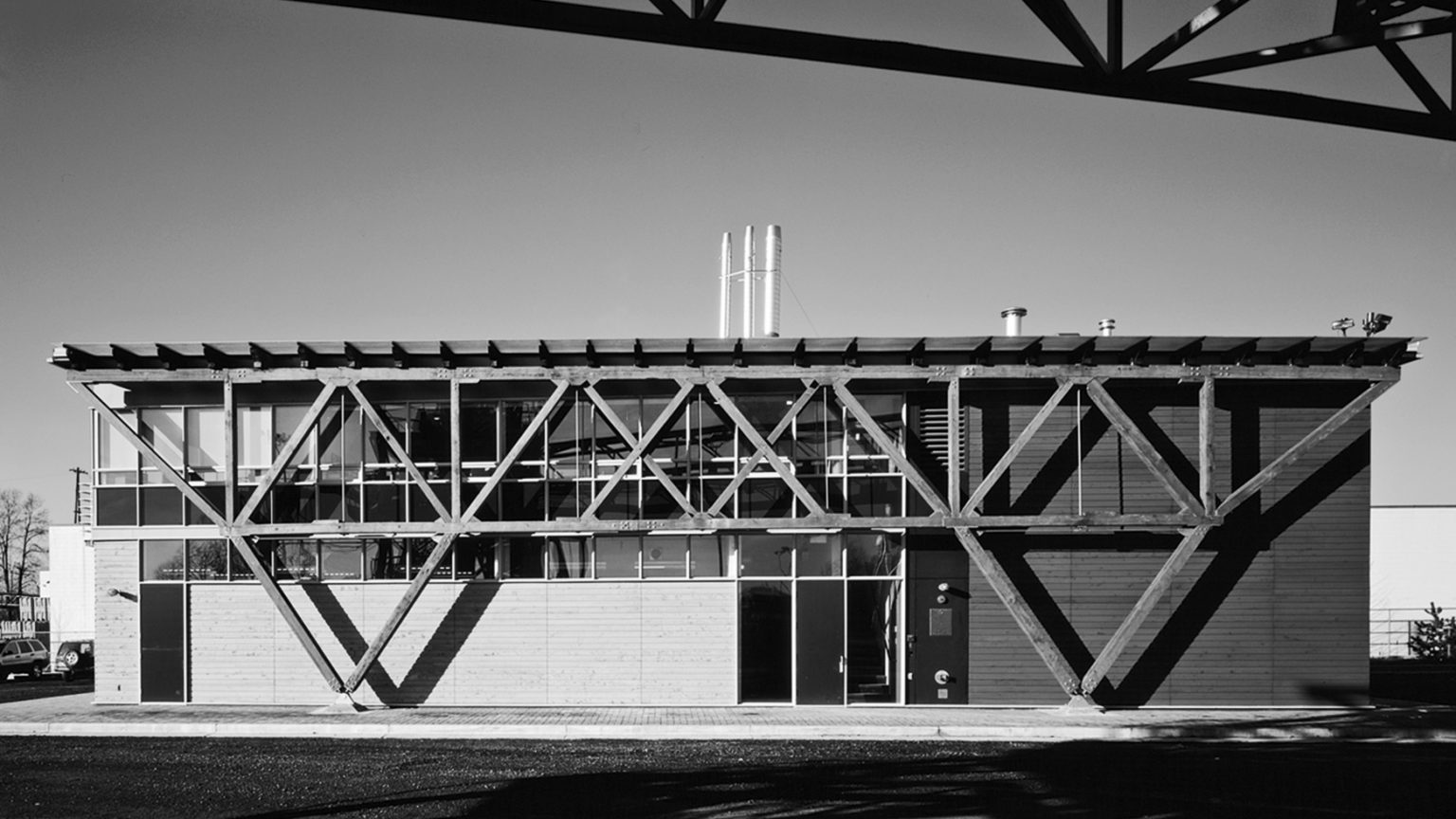
The Material Testing Facility (Busby and Associates, Fast+Epp, 1999, Vancouver, Canada) reclaims heavy timber structural members from former warehouses on the site.
See also our page on Phoenix3D for the interactive Grasshopper plugin that builds on the algorithms described on this page.
Please note that the publication lists from Infoscience integrated into the EPFL website, lab or people pages are frozen following the launch of the new version of platform. The owners of these pages are invited to recreate their publication list from Infoscience. For any assistance, please consult the Infoscience help or contact support.
Environmental impact minimization of reticular structures made of reused and new elements through Life Cycle Assessment and Mixed-Integer Linear Programming
An important share of building environmental impacts is embodied in load-bearing structures because of their large material mass and energy-intensive fabrication process. To reduce substantially material consumption and waste caused by the construction industry, structures can be designed and built with reused elements. Structural element reuse involves: element sourcing and deconstruction, reconditioning and transport. As these processes also generate environmental impacts, reuse might not always be preferred over new construction. This paper presents a method to design reticular structures with minimal environmental impact made from reused and new elements. The formulation given in this paper is based on a combination of Life Cycle Assessment (LCA) and discrete structural optimization. The LCA carried out in this work accounts for impacts generated from sourcing reclaimed elements to the assembly of the structure. Structural optimization is subject to stress constraints on element capacity and deflection limits for serviceability. Typical loading scenarios are considered. The method is applied to the design of three single-span steel trusses of different topology subject to 100 simulated stocks of reusable elements that have varying cross-sections and lengths. Benchmarks against minimum-weight solutions made solely from recycled steel show that this method produces structures with up to 56% lower environmental impact. Depending on stock availability, the lowest environmental impact is achieved through a combination of reused and new elements.
Energy and Buildings
2020
Vol. 215 , p. 109827.DOI : 10.1016/j.enbuild.2020.109827
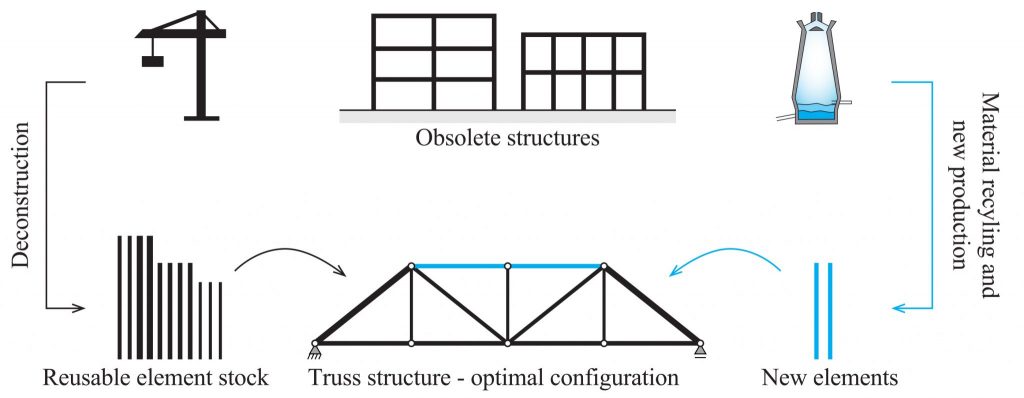
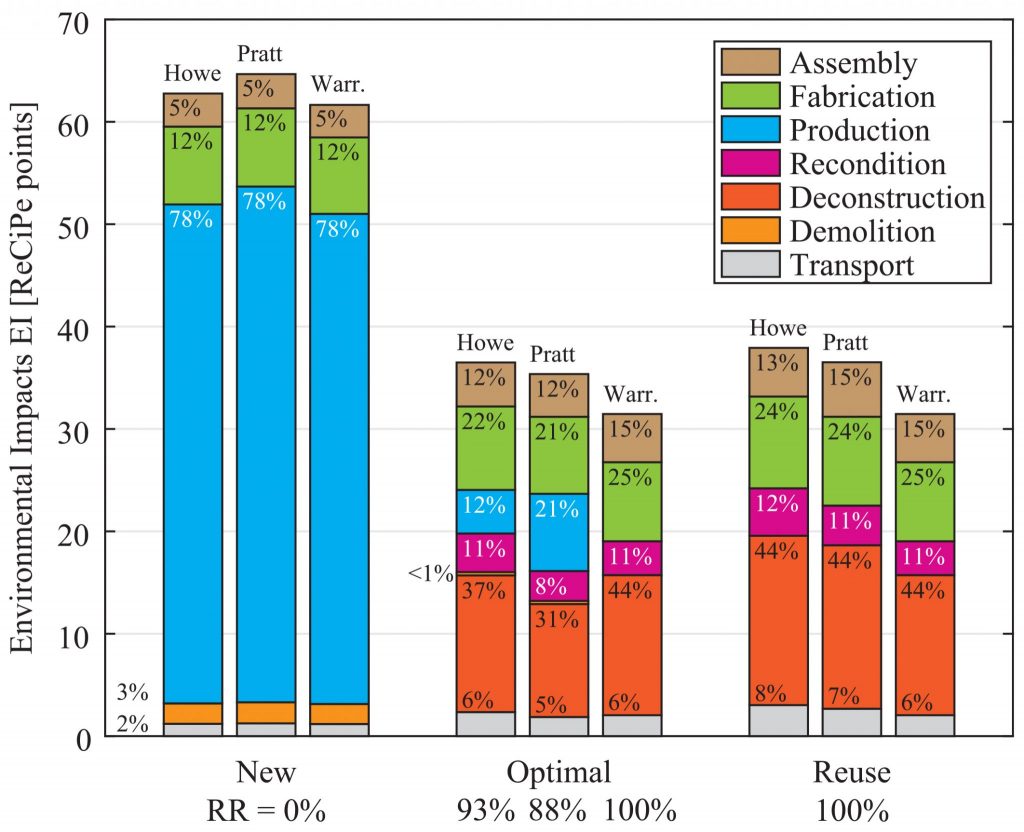
Please note that the publication lists from Infoscience integrated into the EPFL website, lab or people pages are frozen following the launch of the new version of platform. The owners of these pages are invited to recreate their publication list from Infoscience. For any assistance, please consult the Infoscience help or contact support.
Design of Truss Structures Through Reuse
This paper presents structural optimization techniques to design truss structures that make best use of a given stock of structural components. Still little explored, the reuse of structural components over multiple service lives has the potential to significantly reduce the environmental impact of building structures. Structural design and construction based on reuse avoids sourcing new material, it reduces superfluous waste, and requires little energy. However, designing a structure from a stock of reclaimed elements entails a change of design paradigm: in contrast to conventional design practice, the structural geometry and topology depends on element stock characteristics, e.g. available cross sections and lengths. This paper presents discrete structural optimization formulations to design truss systems from stock elements. The approach taken in this work is iterative: 1) element assignment and topology optimization are carried out, and 2) geometry optimization follows thereafter to best-fit the system geometry to the length of assigned stock elements, for instance to reduce cut-off waste. Two case studies are presented: a) a cantilever of simple layout used to explain the details of the design methodology, and b) a train station roof structure of complex layout made from elements reused from disassembled electric pylons. For these case studies, Life Cycle Assessment confirms that an up to 63% environmental impact reduction is possible when comparing structures obtained with the proposed method against weight-optimized solutions made of new elements.
Structures. 2019. Vol. 18, p. 128-137. DOI : 10.1016/j.istruc.2018.11.006.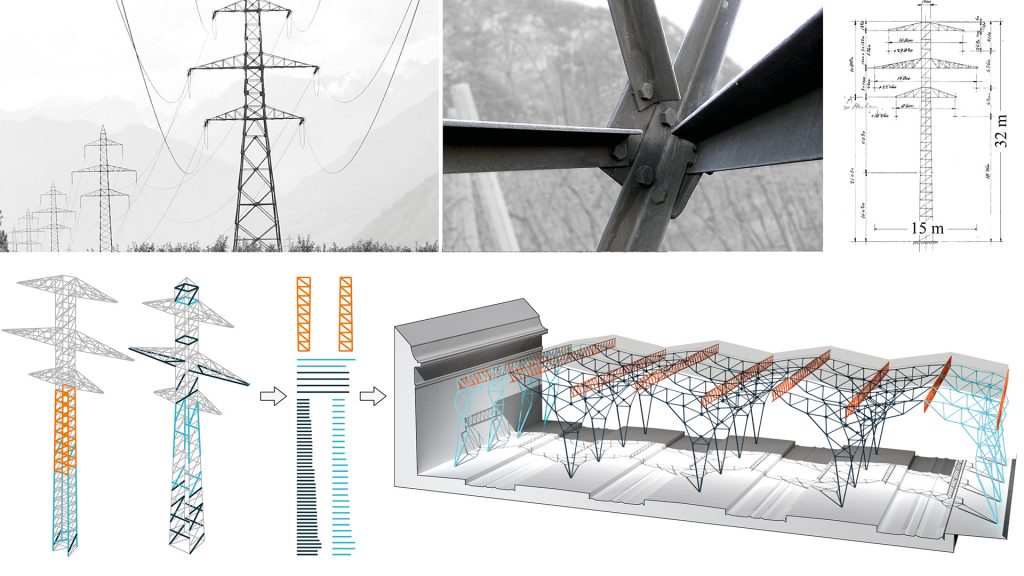
Please note that the publication lists from Infoscience integrated into the EPFL website, lab or people pages are frozen following the launch of the new version of platform. The owners of these pages are invited to recreate their publication list from Infoscience. For any assistance, please consult the Infoscience help or contact support.
Optimum design of frame structures from a stock of reclaimed elements
This paper presents optimization methods to design frame structures from a stock of existing elements. These methods are relevant when reusing structural elements over multiple service lives. Reuse has the potential to reduce the environmental impact of building structures because it avoids sourcing new material, it reduces waste and it requires little energy. When reusing elements, cross-section and length availability have a major influence on the structural design. In previous own work, design of truss structures from a stock of elements was formulated as a mixed-integer linear programming (MILP) problem. It was shown that this method produces solutions which are global optima in terms of stock utilization. This work extends previous formulations to stock-constrained optimization of frame structures subject to ultimate and serviceability limit states hence expanding the range of structural typologies that can be designed through reuse. Fundamental to this method is the globally optimal assignment of available stock elements to member positions in the frame structure. Two scenarios are considered: A) the use of individual stock elements for each member of the frame, and B) a cutting stock approach, where multiple members of the frame are cut from a single stock element. Numerical case studies are presented to show the applicability of the proposed method to practical designs. To carry out the case studies, a stock of elements was inventoried from shop drawings of deconstructed buildings. Results show that through reusing structural elements a significant reduction of embodied greenhouse gas emissions could be achieved compared to optimized structures made of new elements.
Frontiers in Built Environment. 2020-05-27. Vol. 6, num. 57, p. 1-18. DOI : 10.3389/fbuil.2020.00057.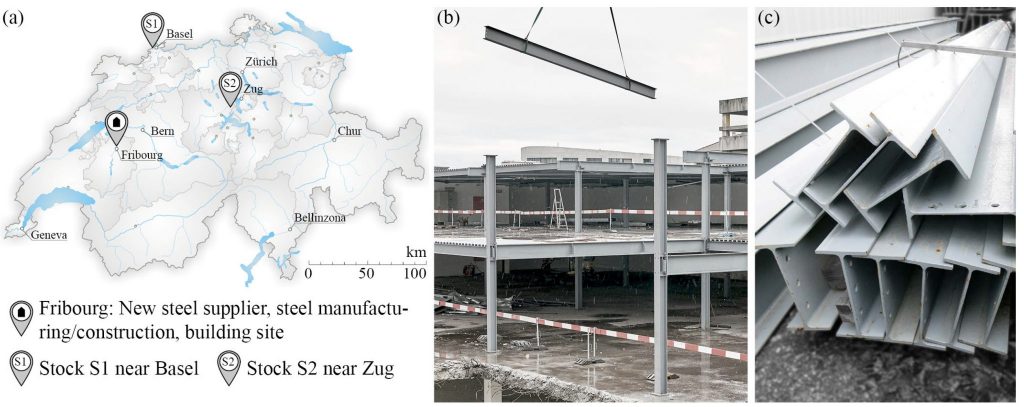
Map (a) by (Tschubby, 2005) CC-BY-SA 3.0; pictures (b) and (c) courtesy of baubüro in situ, Basel, Switzerland.
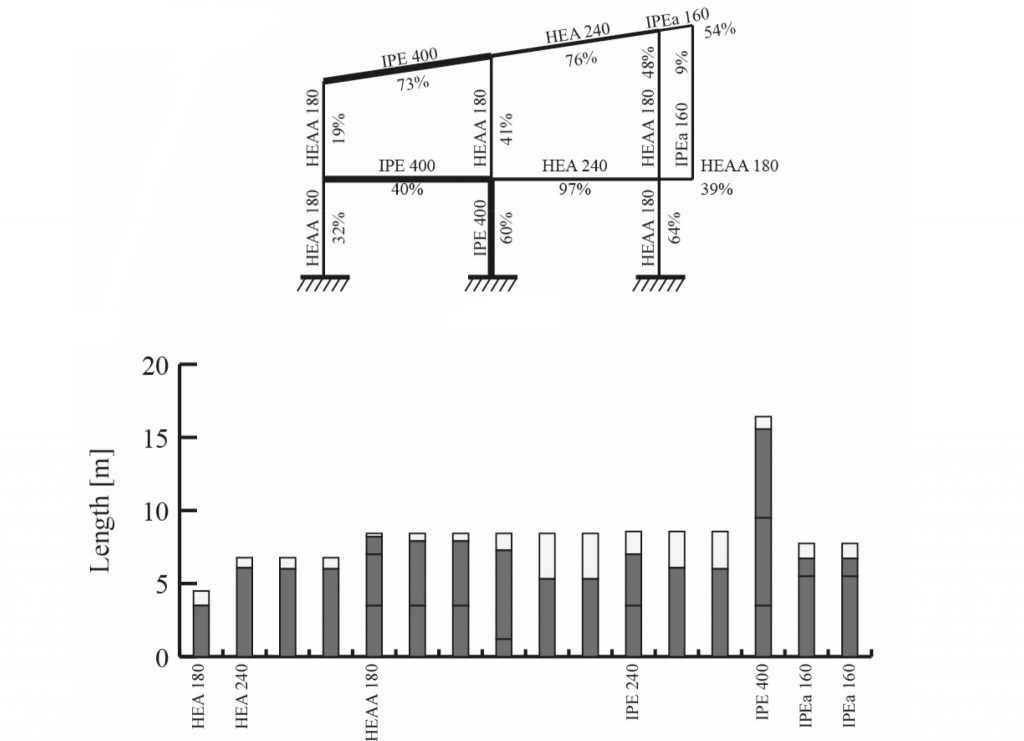
Please note that the publication lists from Infoscience integrated into the EPFL website, lab or people pages are frozen following the launch of the new version of platform. The owners of these pages are invited to recreate their publication list from Infoscience. For any assistance, please consult the Infoscience help or contact support.
Form follows availability – Designing structures through reuse
This work proposes a new direction in structural design: the synthesis of structures through the reuse of elements. Reusing structural elements reduces the environmental impacts of building structures because it avoids sourcing new material, it reduces waste and it requires little energy. Designing structures from reused elements is unlike conventional structural design because stock element availability is a design input. In other words, structures must be designed subject to availability of given element characteristics such as length and cross-section type, which have a major influence on the optimal structure layout and form. In this new paradigm structural form follows availability. In this work new computational methods for the synthesis of reticular structures through reuse are formulated to address two scenarios: a) reuse of reclaimed elements from a given stock, and b) design of an element stock which is used as a kit of parts to build diverse structures. Case studies are presented to demonstrate the potential of the proposed methods. It is shown that structures produced by these methods have a significantly lower environmental impact than minimum weight structures made of new elements.
Journal of the International Association for Shell and Spatial Structures. 2019. Vol. 60, num. 4, p. 257-265. DOI : 10.20898/j.iass.2019.202.033.

Other publications:
- Computational Tool for Stock-Constrained Design of Structures
IASS symposium 2021 (detailed record) - Form follows availability – Designing structures through reuse
IASS symposium 2019 (detailed record) - Exploration of spatial structures made from reused elements and the design of optimal kits-of-parts
ICSA conference 2019 (detailed record) - The reuse of load-bearing components
SBE 2019 (detailed record) - Optimum Truss Design with Reused Stock Elements
IASS symposium 2018 (detailed record) - Optimization Formulations for the Design of Low Embodied Energy Structures Made from Reused Elements
EG-ICE conference 2018 (detailed record)